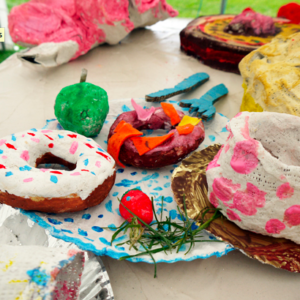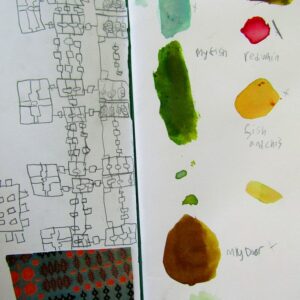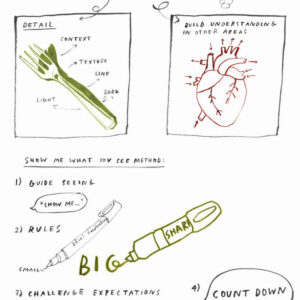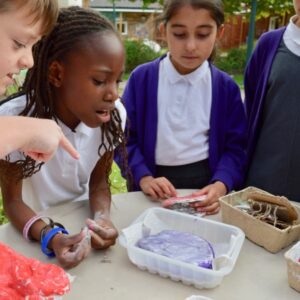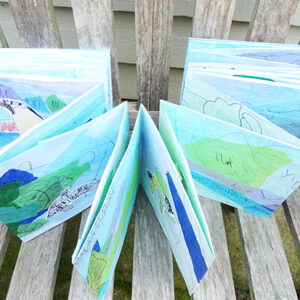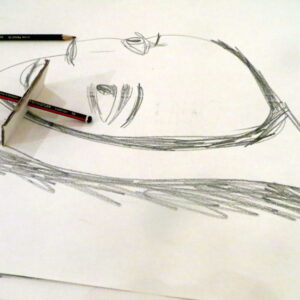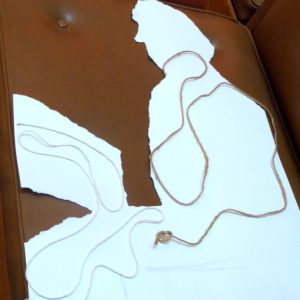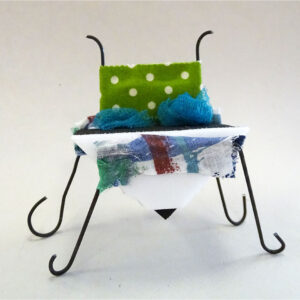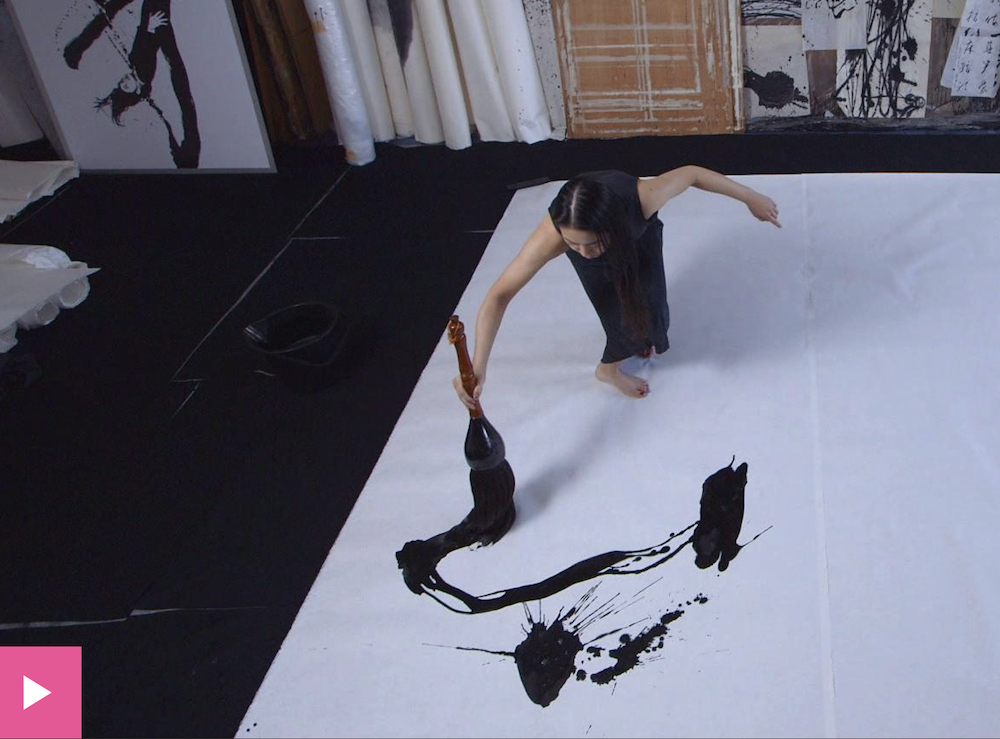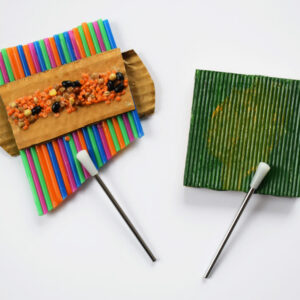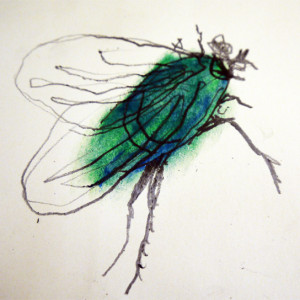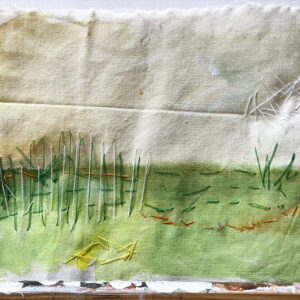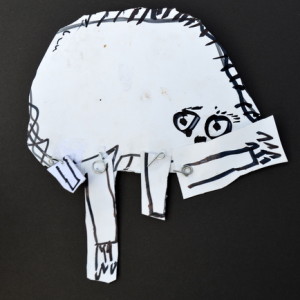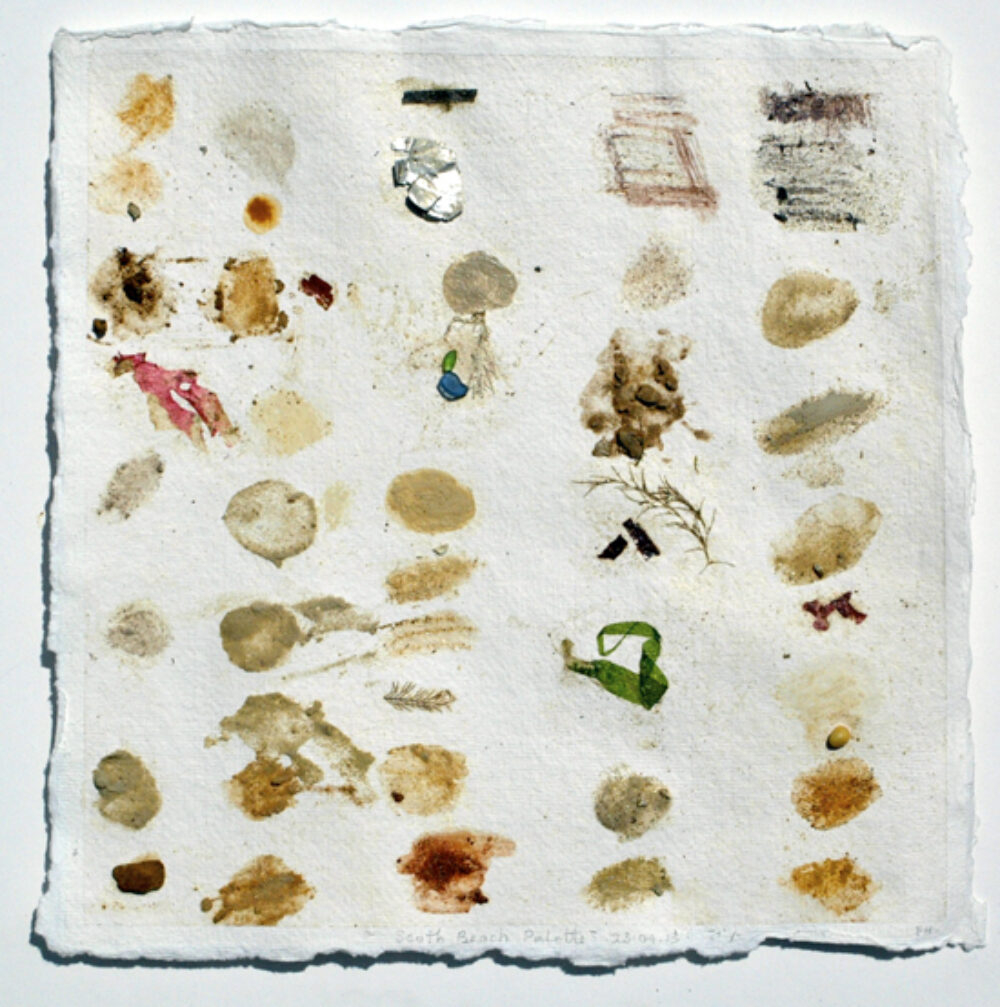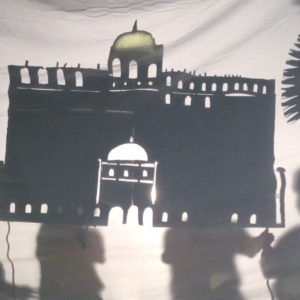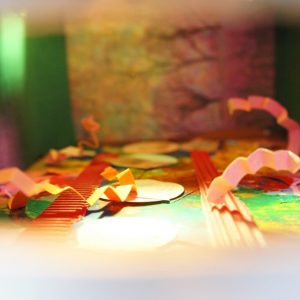Drawing Source Material: Food
You May Also Like…
Talking Points: Lucia Hierro
A collection of sources to explore the work of Lucia Hierro.
Please note that this page contains links to external websites and has videos from external websites embedded. At the time of creating, AccessArt checked all links to ensure content is appropriate for teachers to access. However external websites and videos are updated and that is beyond our control.
Please let us know if you find a 404 link, or if you feel content is no longer appropriate.
We strongly recommend as part of good teaching practice that teachers watch all videos and visit all websites before sharing with a class. On occasion there may be elements of a video you would prefer not to show to your class and it is the teacher’s responsibility to ensure content is appropriate. Many thanks.
*If you are having issues viewing videos it may be due to your schools firewall or your cookie selection. Please check with your IT department.*
This resource is free to access and is not a part of AccessArt membership.




Lucia Hierro
Lucia Hierro is a Dominican American artist who fuses photography and sculpture to explore identity, community and consumer culture.
Lucia is curious about objects, their histories and the identities that are associated with them.
Find more images of Lucia’s work on her website.
Watch the videos below to find out more about her work.
Explore how Lucia Hierro brings food and culture into a collaboration with Adidas.
Watch this interview with Lucia Hierro exploring where sculpture and photography lines blur.
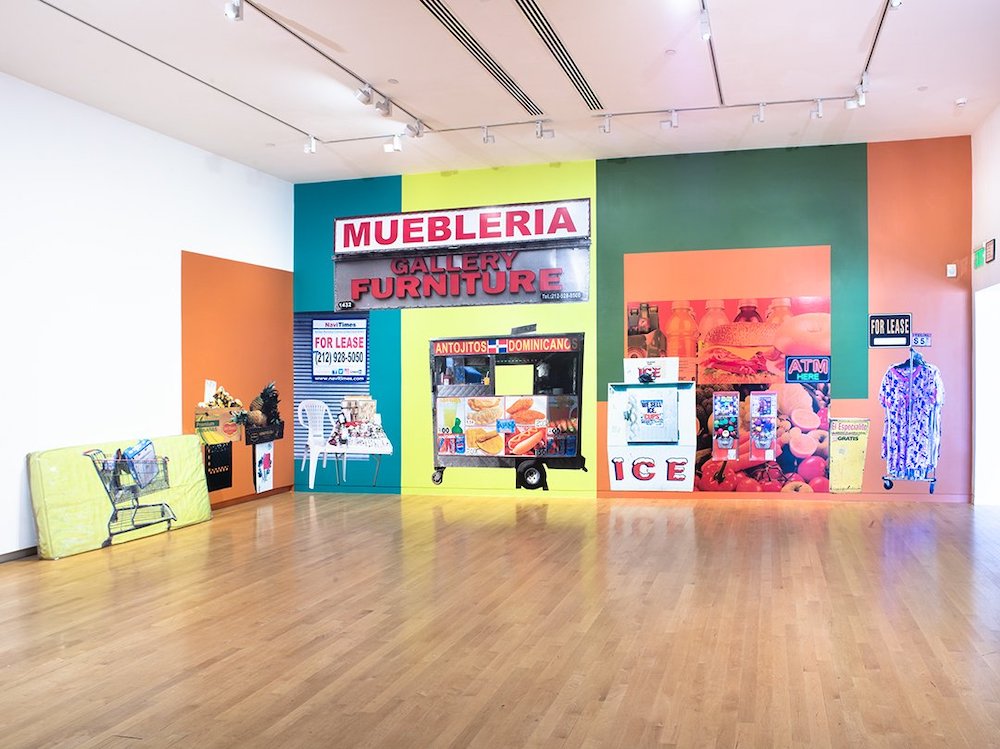
Marginal Costs Mural & Casita 2021 Digital Print on Cotton Fitted Sheets, Upholstered Twin Mattress 39 x 76 x 5
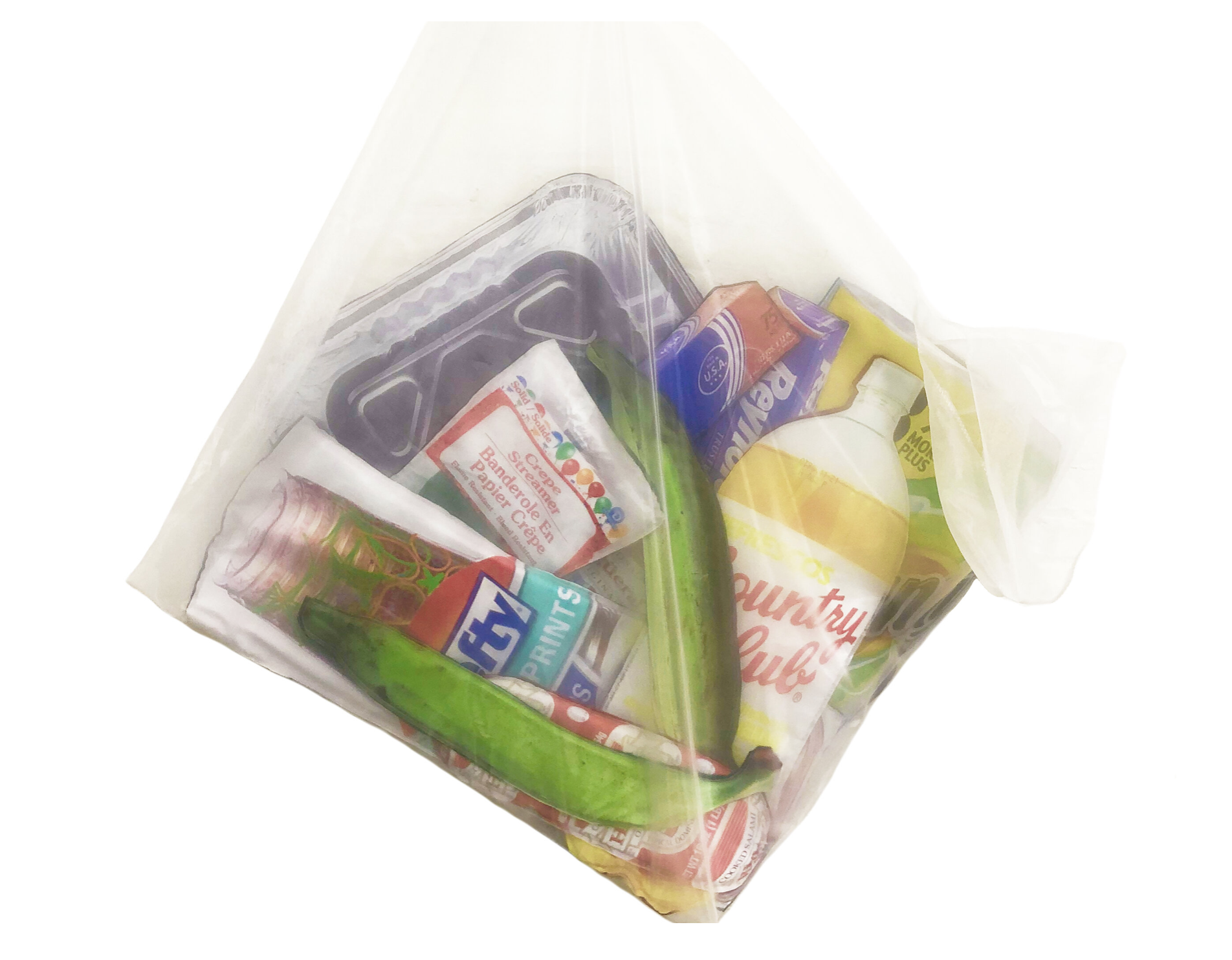
Mondeo para Baby Chowder 1, 2019 Poly-organdy, Felt and Foam, Digital Print on Brushed Nylon 42 x 57 x 5 inc
Questions to Ask Children
Describe what you can see.
How do the colours in the installations make you feel?
How does her work make you feel?
How would it feel to be in that space, interacting with the sculptures?
This Talking Points Is Used In…
Pathway: Festival Feasts
This is featured in the ‘Festival Feasts’ pathway
using sketchbooks to make visual notes
Show me what you see
Talking Points: Claes Oldenburg
A collection of sources to explore the work of Claes Oldenburg.
Please note that this page contains links to external websites and has videos from external websites embedded. At the time of creating, AccessArt checked all links to ensure content is appropriate for teachers to access. However external websites and videos are updated and that is beyond our control.
Please let us know if you find a 404 link, or if you feel content is no longer appropriate.
We strongly recommend as part of good teaching practice that teachers watch all videos and visit all websites before sharing with a class. On occasion there may be elements of a video you would prefer not to show to your class and it is the teacher’s responsibility to ensure content is appropriate. Many thanks.
*If you are having issues viewing videos it may be due to your schools firewall or your cookie selection. Please check with your IT department.*
This resource is free to access and is not a part of AccessArt membership.





Claes Oldenburg
The video below shows how Oldenburgs sculpture ‘BLT’ is built and rebuilt for every exhibition.
Watch the video below to find out more about Claes Oldenburgs ‘Store’.
Watch this video of Oldenburg discussing Shoestring Potatoes Spilling From a Bag (1966) on Vimeo here.
Questions to Ask Children
How do his sculptures make you feel?
Which food sculpture is your favourite? Why?
How do you think the sculptures feel?
If you created your own sculpture store, what would be in it?
How would it feel to be in that space, interacting with the sculptures?
What do you think Oldenburg was trying to say through his artwork?
This Talking Points Is Used In…
Pathway: Festival Feasts
This is featured in the ‘Festival Feasts’ pathway
using sketchbooks to make visual notes
Show me what you see
Pathway: Working with Shape and Colour
Pathway for Years 3 & 4
Disciplines:
Printmaking (Stencil/Screen Print), Collage
Key Concepts:
-
That we can be inspired by key artworks and make our own work in creative response.
-
That we can use shape and colour as a way to simplify elements of the world.
-
That shapes have both a positive and negative element.
-
That we can arrange shapes to create exciting compositions.
-
That we can build up imagery through layering shapes.
-
That we can use collage to inspire prints.
In this pathway children use close looking and the “Show Me What You See” technique to explore artwork from a particular artist, movement or era. Children then explore how they can use shape and colour to simplify elements, inspired by the Cut-outs of Henri Matisse.
Using first collage, then simple printmaking methods, pupils play with positive and negative shapes and spaces to create meaningful compositions in response to the original artworks they looked at.
Medium:
Paper, Printmaking Ink, Stencils & Crayons
Artist: Henri Matisse, Claire Willberg
If you use this resource in your setting, please tag us on social media: #InspiredBy @accessart (facebook, twitter) @accessart.org.uk (instagram) and share the url. Thank you!
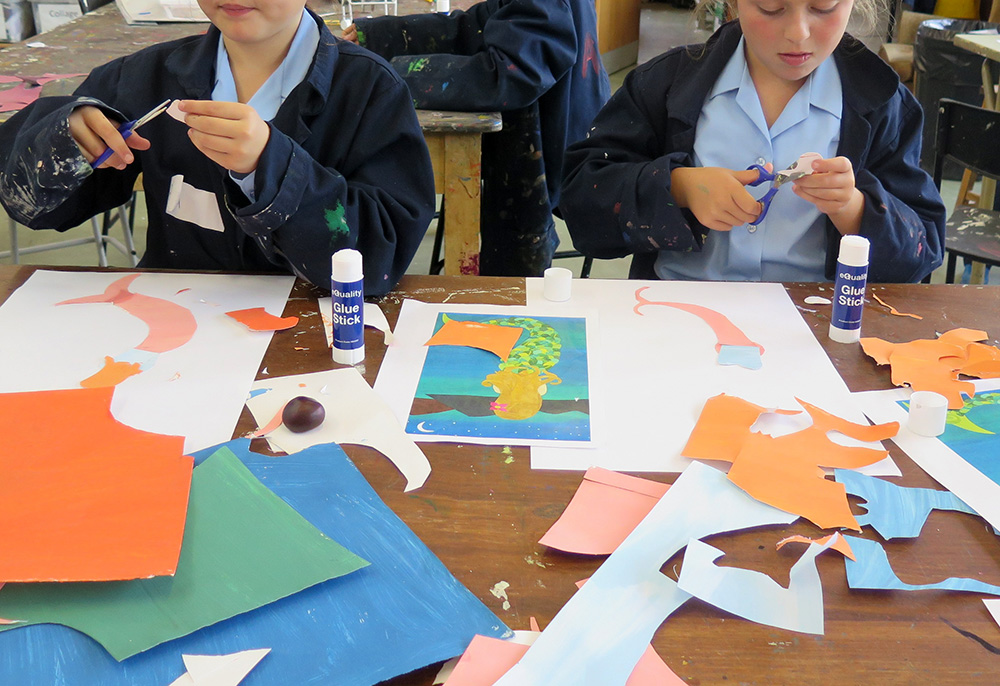
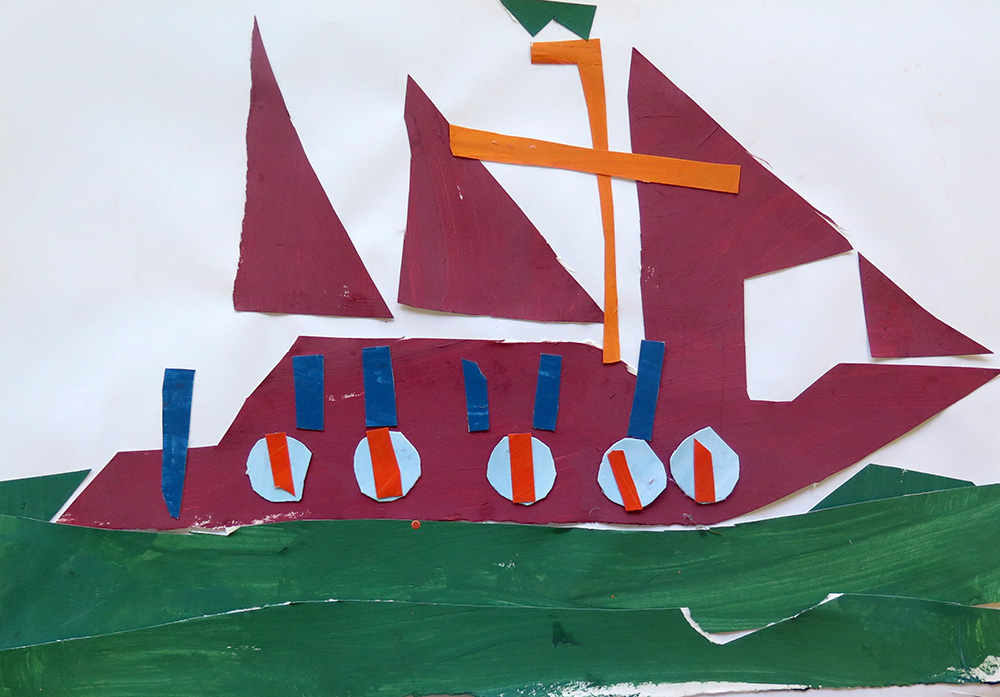
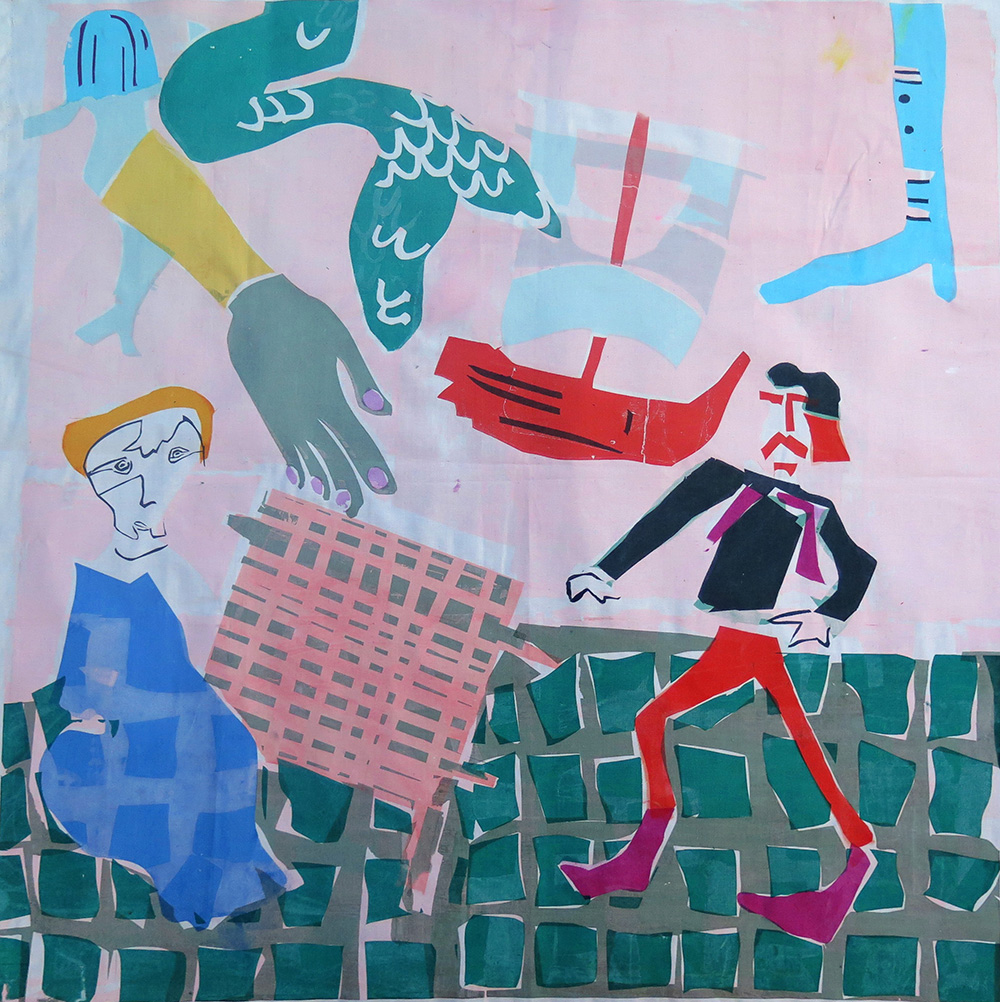

Teaching Notes
Find the MTP for this pathway here.
Find the Zoom CPD session introducing this pathway here.
See the recording of the Zoom CPD session exploring Screen Printing in the classroom.
Curriculum Links
History: Choose a painting as inspiration which typifies a particular historical period, for example, a painting from Ancient Egyptian.
Maths: 2D/3D shapes, pattern.
PSHE: Peer discussion.
I Can…
-
I can explore an artwork through looking, talking and drawing.
-
I can use the “Show Me What You See” technique to help me look closely, working in my sketchbook making drawings and notes using pencils and pens.
-
I can cut shapes directly into paper, using scissors, inspired by the artwork.
-
I can collage with my cut elements, choosing colour, shape and composition to make my own creative response to the artwork.
-
I can add to my collage, using line, colour and shape made by stencils.
-
I can explore negative and positive shapes.
-
I can take photographs of my work.
-
I can share my work with my class. I can reflect and share what I like, and what I would like to try again. I can look at the work of my classmates and give useful feedback through class or small group discussion.
Time
This pathway takes 6 weeks, with an hour per week. Follow the stages in green for a shorter pathway or less complex journey.
Materials
Soft B pencils, coloured pencils, oil/chalk pastels, A3 or A2 sugar or cartridge paper, collage papers, PVA glue, scissors.
Option 1: Monoprinting with Carbon Paper – Carbon paper, sharp pencil or pen, oil pastels.
Option 2: Explore Stencils – Card, oil pastels, scissors.
Option 3: Screenprinting mesh, water-based printing ink, tray, acrylic printing medium, scrap card for squeegee, embroidery hoop (optional), newsprint.
Pathway: Working with Shape & Colour
A PDF of this pathway can be found here.
-
Aims of the Pathway
This pathway aims to enable pupils to respond to a painting from another culture or era, using visual literacy skills to come to their own understanding of the artwork.
Children then go on to make their own creative response to the original painting, using layering of shape, colour and line using printmaking and drawing.
- Week 1: What’s Your Focus?
Choose an Artwork to Focus Your Exploration
Choose a painting or artwork which you would like to explore.
This might be a painting in a local museum or gallery, a painting available online, or a painting from another era or culture which ties in with a curriculum area.
Here are some free to access ideas:
-
Focus upon the Bayeux Tapestry
-
Focus upon Egyptian Painting
-
Focus upon an art work from Google Arts & Culture

Portrait of a Woman in a Landscape (Portrait de femme dans un paysage) (ca. 1893–1896) by Henri Rousseau. -
- Use Close Looking & Drawing to Explore
Show Me What You See
Working in sketchbooks, use the “Show Me What You See” technique to help pupil’s visually explore your chosen artwork.
You can find a detailed explanation of the “Show Me What You See” resource here.
During the exercise, draw the children’s attention to the visual elements of the artwork, including talking about shape, colour and composition. As well as using line in sketchbooks to describe shapes, also use colour (pastel, crayon, pens etc).
By the end of the session sketchbooks should be full of pupil’s interpretations of different elements (shapes, lines etc) from the paintings.
- Week 2: Look and Talk
Painting With Scissors
Visit the free to access “Talking Points: Henry Matisse Cut Outs” resource to introduce pupils to the idea of “painting with scissors”.
Use the free to access “Talking Points: Romare Bearden” resource to introduce pupils to the work of African American artist Romare Bearden who was influenced by patchwork quilts derived from African-American slave crafts and the work of Matisse. Bearden illustrated Homer’s Odyssey using collage.

Refer to the “Drawing With Scissors” resource to see how to explore a historic (or contemporary) painting through printing. (Using just the part of the resource about collaging with cut elements).
- “Paint with Scissors”
Begin to Cut Shapes

With the original artwork on the white board and sketchbook work from Show Me What You See, provide pupils with coloured paper (sugar or coloured paper, or even old paintings which can be cut up) and invite them to start cutting out shapes made in response to the original artwork. You may want to refer back to “Drawing With Scissors“ resource.
You might like to split the class into groups – each taking a section of the original artwork, or you might like to give pupils more space to choose elements they particularly like.
Don’t waste any paper – at the end of the session encourage pupils to keep the paper which has been cut away (you can sort it into sizes) as well as the positive “shapes”.
“Envelopes” can be made/stuck in sketchbooks to keep paper elements safe until next week.
You might like to see the “Positive and Negative Shapes” resource (to be done).
Continue this work into week three.
- Week 3: Continue “Painting with Scissors”
Collaging with Cut Elements

Continue the process described in the “Drawing with Scissors” resource. Invite pupils to begin to lay down their cut elements to make collaged compositions, working on A3 or larger paper.
Encourage children to explore playfully before they decide where to stick shapes down on the page. Think about composition and meaning. Remember they are not trying to recreate the original artwork, instead they are making a creative response (which is personal) to the artwork.
Remind pupils they can use the pieces of paper which have had shapes cut out of them, and so introduce negative shapes into their work.
Continue into week four.
- Continue with Collage
Finalise Collages

Continue the process described in the “Drawing with Scissors” resource.
Finalise first stage of collages ready for second part of the project. By this point all cut elements should be stuck down onto each pupil’s piece of paper.
- Week 4 & 5: Add Further Detail
Stencils, Masks or Line

Continue the process described in the “Drawing with Scissors” resource.
The final stage of the project is to add further detail to the artwork by working over the collaged elements.
You can choose which method you want children to use from the 3 options below. Choose the option you think will best help pupils respond to the original artwork.
The aim of this final stage is to add further definition or clarity to the collaged composition, using a different medium to make the artwork feel more dimensional (collage can be quite a “flat” medium).
- Option 1
Printed Line

Revisit the original artwork and get pupils to look closely at the qualities of line the artists used.
Use the “Mono Printing with Carbon Paper” resource and use carbon paper to add line drawings over the top of the collaged sheets.
Remember the drawings do not have to line up with the exiting imagery. Layering imagery of different types will give exciting results.
-
Or…
- Option 2
Explore Stencils

Use the “Explore Stencils, Composition and Expressive Mark Making with Oil Pastels” resource and invite children to create masks and stencils out of card, thinking about negative and positive shapes. Use the masks and stencils over the original collaged artwork, using oil pastel as a medium.
Encourage the children to use a range of mark making and experiment with colour blending so that they get an understanding of the qualities of oil pastels.
-
Or…
- Option 3
Simple Screen Printing Hack

If you are feeling more confident, you may want to give pupils the opportunity to explore simple screen printing as an alternative way to explore masks and stencils. See our “Talking Points: Screenprint“
Give children the opportunity to try out screen printing with this “Simple Screen Print Hack“. Watch all 3 videos before starting.
Ask children to prepare their stencils and masks prior to printing. Remember that they will need stencils and masks of every element including clothing, face detail or any big shapes within the background.
As with Option 1 and 2, be inventive about the shapes which are overlaid over the collaged elements – remember the shapes do not have to line up with the collaged composition – exciting and surprising outcomes can be achieved by creating new shapes and lines over the first collage.
- Week 6: Reflect & Discuss
Share, Reflect, Discuss
Time to see the work which has been made, talk about intention and outcome.

Invite pupils to display the work in a clear space, and walk around the work as if they are in a gallery. Give the work the respect it deserves. Remind the children of their handwork.
If you have class cameras or tablets, invite the children to document their work, working in pairs or teams.
Use the resource here to help you run a class “crit” to finish the project.
- Extension
Extension: Animating With Used Masks, Stencils, Or Left Over Shapes

Claire Willberg repurposes the paper that she uses in her printing process to create visually exciting animations. See her animations in “Talking Points: Claire Willberg“.
Get your children to keep their stencils and masks once they’ve been used and make a stop motion.
See the “Animation Software” resource for support.
See the Pathway Used in Schools…
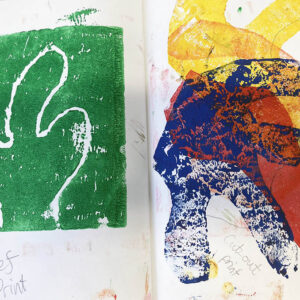
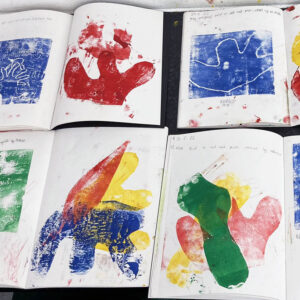
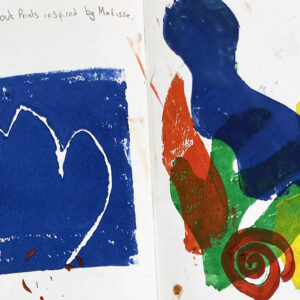
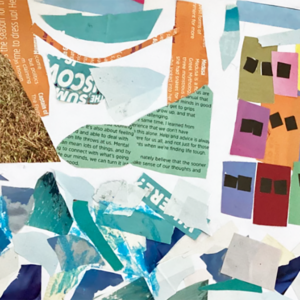
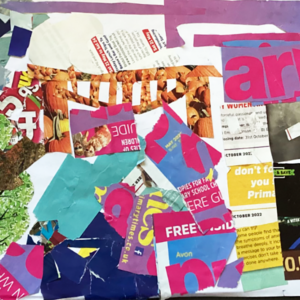
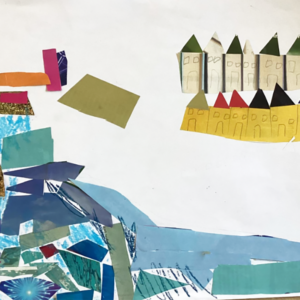
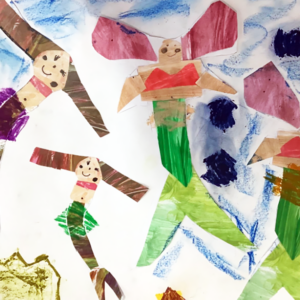
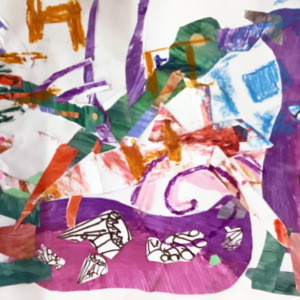
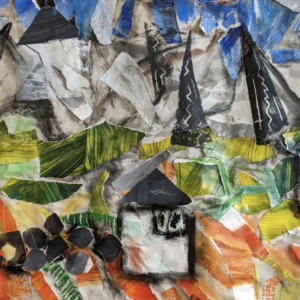
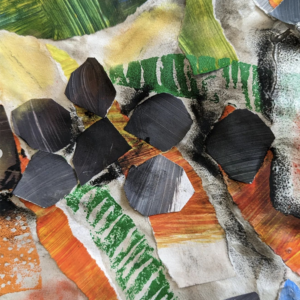
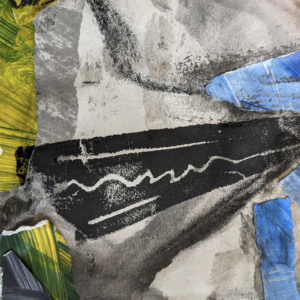
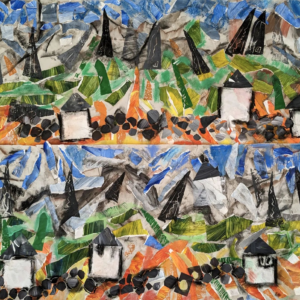
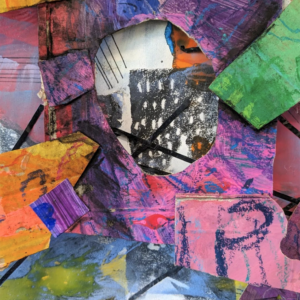
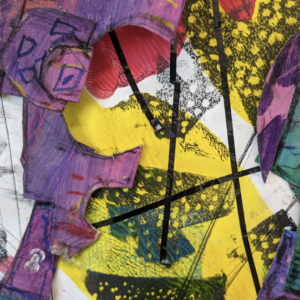
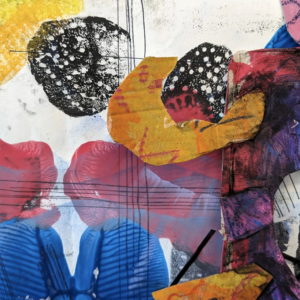
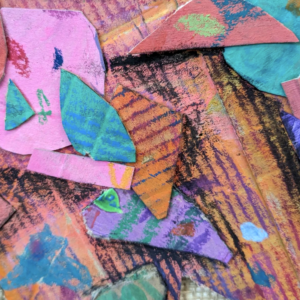
If You Use AccessArt Resources
You May Want To…
Join our Facebook Group
Join the AccessArt Network group on Facebook and ask questions of others using our resources
Share and Tag
Share photos of work made by tagging us on social media
You May Also Like…
Using Sketchbooks, Drawing and Reflective Tools in the 20th Century Gallery at the Fitzwilliam Museum, Cambridge
Explore 20th Century paintings and sculpture, using sketchbooks & drawing as tools for looking
Using Drawing to Get Closer to 18th Century Portraits at the Fitzwilliam Museum, Cambridge
Explore different drawing exercises for capturing 18th Century portraiture
Talking Points: History of Chair Design
A collection of sources and imagery to explore the history of chair design.
Please note that this page contains links to external websites and has videos from external websites embedded. At the time of creating, AccessArt checked all links to ensure content is appropriate for teachers to access. However external websites and videos are updated and that is beyond our control.
Please let us know if you find a 404 link, or if you feel content is no longer appropriate.
We strongly recommend as part of good teaching practice that teachers watch all videos and visit all websites before sharing with a class. On occasion there may be elements of a video you would prefer not to show to your class and it is the teacher’s responsibility to ensure content is appropriate. Many thanks.
*If you are having issues viewing videos it may be due to your schools firewall or your cookie selection. Please check with your IT department.*
This resource is free to access and is not a part of AccessArt membership.




Explore how chair design has evolved over time with these video.
Questions to Ask Children
Out of the chairs you’ve seen, which is your favourite and why? How would it feel to sit in it?
What do you think designers throughout the ages were trying to say with their chairs?
Raw Edges designs Kenny chair and Sugar stool
Watch this video of a chair being built.
See how design firm Populous are coming up with new ideas for seating solutions in public spaces.
This Talking Points Is Used In…
Pathway: Take a Seat
This is featured in the ‘Take a Seat’ pathway
using sketchbooks to make visual notes
Find out how pupils can respond to artists work in sketchbooks
Show me what you see
Enable close looking and drawing with this exercise
Talking Points: Yinka Ilori and Chair Design
A collection of sources and imagery to explore the work of Yinka Ilori.
Please note that this page contains links to external websites and has videos from external websites embedded. At the time of creating, AccessArt checked all links to ensure content is appropriate for teachers to access. However external websites and videos are updated and that is beyond our control.
Please let us know if you find a 404 link, or if you feel content is no longer appropriate.
We strongly recommend as part of good teaching practice that teachers watch all videos and visit all websites before sharing with a class. On occasion there may be elements of a video you would prefer not to show to your class and it is the teacher’s responsibility to ensure content is appropriate. Many thanks.
*If you are having issues viewing videos it may be due to your schools firewall or your cookie selection. Please check with your IT department.*
This resource is free to access and is not a part of AccessArt membership.




Yinka Ilori
Yinka Ilori is a multidisciplinary artist and designer with a bold bright visual language influenced by his British-Nigerian heritage. Three components that feature heavily in Yinka’s work are pattern, colour and storytelling.
Yinka uses his crafts as a way to communicate Nigerian parables and verbal traditions.
His work is described as a fusion between contemporary design and Nigerian tradition.
“If the chair you are sitting on could tell your story, would it be a dangerous or good thing?”
Explore some of Yinka’s chairs here.
Please note: Teacher Advisory. Pls watch the video below and decide if you would rather start the video after a few minutes in.
Explore Yinka’s collection ‘If Chairs Could Talk‘ alongside work by the poet Julian Knxx
Watch these videos made by the Craft Council about Yinka’s practise.
Questions to Ask Children
Make a list of everything that you can see in the classroom that has been designed by an artist/designer.
Spend 5 minutes designing a chair based on your mood right now, think about your decision making and annotate the design.
Name colours that are happy/sad/angry/excited.
This Talking Points Is Used In…
Pathway: Take a Seat
This is featured in the ‘Take a Seat’ pathway
using sketchbooks to make visual notes
Find out how pupils can respond to artists work in sketchbooks
Show me what you see
Enable close looking and drawing with this exercise
Talking Points: Tomoko Kawao
A collection of sources and imagery to explore the work of Tomoko Kawao.
Please note that this page contains links to external websites and has videos from external websites embedded. At the time of creating, AccessArt checked all links to ensure content is appropriate for teachers to access. However external websites and videos are updated and that is beyond our control.
Please let us know if you find a 404 link, or if you feel content is no longer appropriate.
We strongly recommend as part of good teaching practice that teachers watch all videos and visit all websites before sharing with a class. On occasion there may be elements of a video you would prefer not to show to your class and it is the teacher’s responsibility to ensure content is appropriate. Many thanks.
*If you are having issues viewing videos it may be due to your schools firewall or your cookie selection. Please check with your IT department.*
This resource is free to access and is not a part of AccessArt membership.


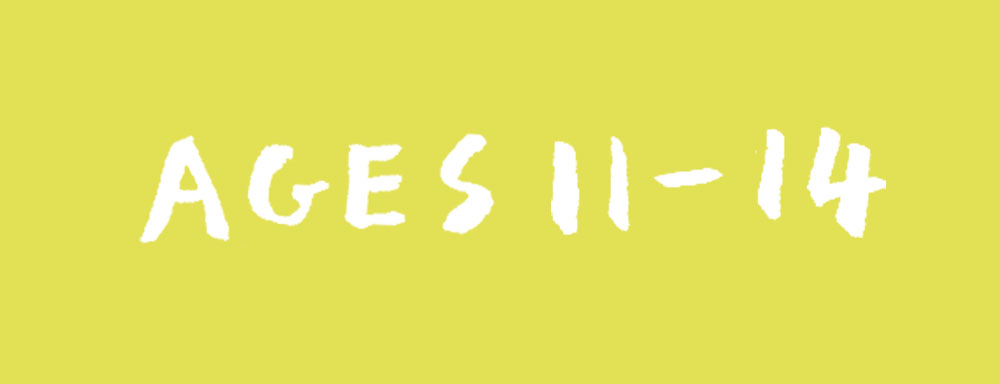
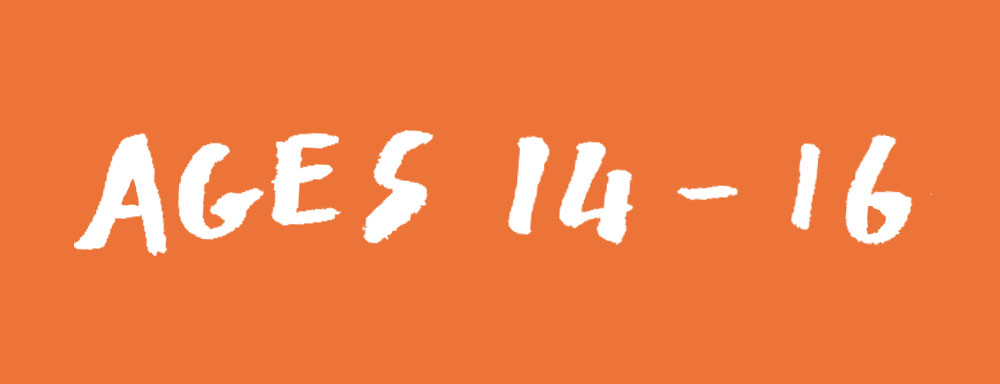

Tomoko Kawao
Kawao’s work incorporates her whole body. Kawao focuses on the unbroken movement of brush and combining the English language with the Eastern calligraphic tradition. Tomoko’s practise extends into film, installation and performance.
Watch one of her performances below and prompt class discussion about the artist with the questions below.
Find a BBC Four Short about the work of Tomoko Kawao here.
Questions to Ask Children
What do you like/dislike about Kawao’s work?
How does her work make you feel?
Play some clips of different music genres and invite children to use their arms to create drawings in the air in response to the music.
This Talking Points Is Used In…
Pathway: Music and art
This is featured in the ‘Music and Art’ pathway
using sketchbooks to make visual notes
Show me what you see
Talking Points: Eric Carle
A collection of sources and imagery to explore the work of Eric Carle.
Please note that this page contains links to external websites and has videos from external websites embedded. At the time of creating, AccessArt checked all links to ensure content is appropriate for teachers to access. However external websites and videos are updated and that is beyond our control.
Please let us know if you find a 404 link, or if you feel content is no longer appropriate.
We strongly recommend as part of good teaching practice that teachers watch all videos and visit all websites before sharing with a class. On occasion there may be elements of a video you would prefer not to show to your class and it is the teacher’s responsibility to ensure content is appropriate. Many thanks.
*If you are having issues viewing videos it may be due to your schools firewall or your cookie selection. Please check with your IT department.*
This resource is free to access and is not a part of AccessArt membership.



Eric Carle
Eric Carle is the author and illustrator of over seventy picture books for young children. The most well known book from this collection is The Very Hungry Caterpillar.
As a child, Carle’s dad would take him for walks through meadows, memories which heavily influenced his illustrations.
Visit Eric Carle’s website to explore more of his work.
Find out how Eric Carle paints tissue paper.
If your school has access to YouTube you may want to show the first 7 or so minutes of this documentary.
Questions to Ask Children
Have you read The Very Hungry Caterpillar? (If you have the book in school it may be a nice idea to pass it round the class.)
What do you like about Eric Carle’s work?
How does the caterpillar in Eric Carle’s work make you feel?
What’s your favourite insect? Why?
This Talking Points Is Used In…
Pathway: Flora and Fauna
This is featured in the ‘Flora and Fauna’ pathway
using sketchbooks to make visual notes
Show me what you see
Drawing Source Material: Wild Flowers
A collection of imagery and sources which you can use to prompt drawing in schools and community groups.
Please note that this page contains links to external websites and has videos from external websites embedded. At the time of creating, AccessArt checked all links to ensure content is appropriate for teachers to access. However external websites and videos are updated and that is beyond our control.
Please let us know if you find a 404 link, or if you feel content is no longer appropriate.
We strongly recommend as part of good teaching practice that teachers watch all videos and visit all websites before sharing with a class. On occasion there may be elements of a video you would prefer not to show to your class and it is the teacher’s responsibility to ensure content is appropriate. Many thanks.
This resource is free to access and is not part of AccessArt membership.

Wild Flowers
Use this collection of films as source material for pupils exploring wild flowers. In the first instance you might want to pause the videos as suitable points to enable the children to carefully look at the main forms and details. Try to create a sense of momentum – for example you might pause the video 4 times and ask the pupils to make a 1 minute, 2 minute, 3 minute and 4 minute drawing at each pause.
Encourage close and slow looking by talking as they draw – use your voice to attract their attention to features of the flowers.
When pupils are more experienced, you can also try getting them to make their drawings as the videos play – making quick gestural sketches.
Drawing Exercises
-
Have the children draw in a quiet room, with the video on the whiteboard.
-
Stop the video at a chosen frame and use your voice to direct their drawing. Choose words which relate to the imagery, for example you might decide to focus their attention on vertical lines, so you might choose words like: line, growth, upward, downward, fall… or you might choose to attract their attention to the energy of a wave or the curve of a plants stem. Think carefully about the words you use – they don’t have to be used in sentences – you can speak lists.
-
Each sketchbook response might take just 3 to 5 minutes, then move on to another still. Create a sense of momentum.
-
Direct pupils to use a chosen medium. You might like to start with soft pencil or handwriting pen.
This Source Material Features in…
Pathway: Cloth, thread, paint
This is featured in the ‘Cloth, Thread, Paint’ pathway
Pathway: Flora and Fauna
This is featured in the ‘Flora and Fauna’ pathway
using sketchbooks to make visual notes
Show me what you see
Drawing Source Material: Insects
A collection of imagery and sources which you can use to prompt drawing in schools and community groups.
Please note that this page contains links to external websites and has videos from external websites embedded. At the time of creating, AccessArt checked all links to ensure content is appropriate for teachers to access. However external websites and videos are updated and that is beyond our control.
Please let us know if you find a 404 link, or if you feel content is no longer appropriate.
We strongly recommend as part of good teaching practice that teachers watch all videos and visit all websites before sharing with a class. On occasion there may be elements of a video you would prefer not to show to your class and it is the teacher’s responsibility to ensure content is appropriate. Many thanks.
This resource is free to access and is not part of AccessArt membership.

Insects
Use this collection of films as source material for pupils exploring insects. In the first instance you might want to pause the videos as suitable points to enable the children to carefully look at the main forms and details. Try to create a sense of momentum – for example you might pause the video 4 times and ask the pupils to make a 1 minute, 2 minute, 3 minute and 4 minute drawing at each pause.
Encourage close and slow looking by talking as they draw – use your voice to attract their attention to features of the insect.
When pupils are more experienced, you can also try getting them to make their drawings as the videos play – making quick gestural sketches.
Drawing Exercises
-
Have the children draw in a quiet room, with the video on the whiteboard.
-
Stop the video at a chosen frame and use your voice to direct their drawing. Choose words which relate to the imagery, for example you might decide to focus their attention on vertical lines, so you might choose words like: line, growth, upward, downward, fall… or you might choose to attract their attention to the energy of a wave or the curve of an animals back. Think carefully about the words you use – they don’t have to be used in sentences – you can speak lists.
-
Each sketchbook response might take just 3 to 5 minutes, then move on to another still. Create a sense of momentum.
-
Direct pupils to use a chosen medium. You might like to start with soft pencil or handwriting pen.
This Souce Material Is Used In…
Pathway: Flora and Fauna
This is featured in the ‘Flora and Fauna’ pathway
using sketchbooks to make visual notes
Show me what you see
Talking Points: Artists Inspired by Flora and Fauna
A collection of sources and imagery to explore the work of artists who were inspired by Flora and Fauna.
Please note that this page contains links to external websites and has videos from external websites embedded. At the time of creating, AccessArt checked all links to ensure content is appropriate for teachers to access. However external websites and videos are updated and that is beyond our control.
Please let us know if you find a 404 link, or if you feel content is no longer appropriate.
We strongly recommend as part of good teaching practice that teachers watch all videos and visit all websites before sharing with a class. On occasion there may be elements of a video you would prefer not to show to your class and it is the teacher’s responsibility to ensure content is appropriate. Many thanks.
*If you are having issues viewing videos it may be due to your schools firewall or your cookie selection. Please check with your IT department.*
This resource is free to access and is not a part of AccessArt membership.





Henri Rousseau
![]()
The Repast of the Lion (1907) by Henri Rousseau. Original from The MET Museum.
Find out more about Rousseau on Google Arts & Culture. The painting in this link features nudity, however is nothing offensive. Please check any links before showing children as some may include content you would prefer not to show.
Questions to Ask Children
Describe what you see.
Look at the artwork as a whole – which words would you use to describe the whole piece?
Tell me about the details you like.
How does it make you feel?
Erin Anfinson
Hannah Borger
![]()
Amaryllis (1915) by Hannah Borger Overbeck. Original from The Los Angeles County Museum of Art.
Questions to Ask Children
Describe what you see.
How do you think she decided how much detail to include or leave out?
Tell me about the details you like.
Jan van Kessel
![]()
Butterfly, Caterpillar, Moth, Insects, and Currants (1650-1655) painting in high resolution by Jan van Kessel. Original from The Getty.
See more images by Jan van Kessel here.
Questions to Ask Children
What can you see?
Why do you think he chose these insects and fruits to use in one composition?
Which words would you use to describe the whole piece?
Tell me about the details you like.
What materials has the artist used?
Pierre-Joseph Redouté
Explore blooming flowers and fruit trees like: daffodils, tiger lilies, and plum trees.
![]()
Peach from La Botanique de J. J. Rousseau by Pierre-Joseph Redouté (1759–1840). Original from the Library of Congress.
See more artwork by Redoute here.
Questions to Ask Children
What do you see?
How has the artist given the image dimention?
Anselmus Boëtius de Boodt
![]()
Natural History Ensemble, no. 7 (1596-1610) by Anselmus Boëtius de Boodt. Original from the Rijksmuseum.
Questions to Ask Children
What can you see?
Why do you think he selected these items to use in one composition?
Which words would you use to describe the whole piece?
Tell me about the details you like.
How do the colours make you feel?
This Talking Points Is Used In…
Pathway: Flora and Fauna
This is featured in the ‘Flora and Fauna’ pathway
using sketchbooks to make visual notes
Show me what you see
Talking Points: Lauren Child
A collection of imagery and sources designed to stimulate conversation around the work of Lauren Child.
Please note that this page contains links to external websites and has videos from external websites embedded. At the time of creating, AccessArt checked all links to ensure content is appropriate for teachers to access. However external websites and videos are updated and that is beyond our control.
Please let us know if you find a 404 link, or if you feel content is no longer appropriate.
We strongly recommend as part of good teaching practice that teachers watch all videos and visit all websites before sharing with a class. On occasion there may be elements of a video you would prefer not to show to your class and it is the teacher’s responsibility to ensure content is appropriate. Many thanks.
*If you are having issues viewing videos it may be due to your schools firewall or your cookie selection. Please check with your IT department.*
This resource is free to access and is not a part of AccessArt membership.





Lauren Child
Lauren Child is a childrens book author and illustrator. She is well known for the collection of books ‘Charlie and Lola’ which were later adapted into a childrens animation.
Find out more about Lauren’s creative process in the sources below.
Lauren’s Website
Apologies if you cannot view these videos below on Youtube because your school has blocked Youtube.
Illustrating Pippa Longstockings Goes Abroad
Questions to Ask Children
What do you like about the character Pippi Longstocking?
How might you make Pippi Longstockings move?
Why do you think that Lauren layers the body parts?
Questions to Ask Children
Who’s your favourite book character? Why do you like them so much?
Notice how the illustrator and designer work together. What did they do that was so important?
This Talking Points Is Used In…
Pathway: Making Animated Drawings
This is featured in the ‘Making Animated Drawings’ pathway
using sketchbooks to make visual notes
Find out how pupils can respond to artists work in sketchbooks
Show me what you see
Enable close looking and drawing with this exercise
Talking Points: What is a Cyanotype?
A collection of imagery and sources designed to help you explore the potential of Cyanotype.
Please note that this page contains links to external websites and has videos from external websites embedded. At the time of creating, AccessArt checked all links to ensure content is appropriate for teachers to access. However external websites and videos are updated and that is beyond our control.
Please let us know if you find a 404 link, or if you feel content is no longer appropriate.
We strongly recommend as part of good teaching practice that teachers watch all videos and visit all websites before sharing with a class. On occasion there may be elements of a video you would prefer not to show to your class and it is the teacher’s responsibility to ensure content is appropriate. Many thanks.
*If you are having issues viewing videos it may be due to your schools firewall or your cookie selection. Please check with your IT department.*
This resource is free to access and is not a part of AccessArt membership.





What is a Cyanotype?
A cyanotype is a photographic process which results in a cyan coloured print. The process involves a combination of iron salts which are then exposed with Ultra Violet light. The surface for the print then needs to be washed in water oxidise to achieve the blue.
The process was developed in the 1800s and is still used today.
Explore the sources and images below to find out how cyanotypes can be used.
Fabric
Bound Books
This Talking Points Is Used In…
Pathway: using natural materials to make images
This is featured in the ‘Using Natural Materials to Make Images’ pathway
using sketchbooks to make visual notes
Show me what you see
Talking Points: Anna Atkins
This collection of videos and sources will help you explore the work of Anna Atkins.
Please note that this page contains links to external websites and has videos from external websites embedded. At the time of creating, AccessArt checked all links to ensure content is appropriate for teachers to access. However external websites and videos are updated and that is beyond our control.
Please let us know if you find a 404 link, or if you feel content is no longer appropriate.
We strongly recommend as part of good teaching practice that teachers watch all videos and visit all websites before sharing with a class. On occasion there may be elements of a video you would prefer not to show to your class and it is the teacher’s responsibility to ensure content is appropriate. Many thanks.
*If you are having issues viewing videos it may be due to your schools firewall or your cookie selection. Please check with your IT department.*
This resource is free to access and is not a part of AccessArt membership.





Anna Atkins
Anna Atkins was a botanist and photographer in the 1800s. She is considered as the first person to publish a book of photographs.
The process she used was called cyanotype. This used light exposure and a simple chemical process to create blueprints of botanical specimens.
To read more about the invention of photographs explore this Google Arts and Culture resource.
Explore the images and sources below and use the questions to inspire classroom discussion.
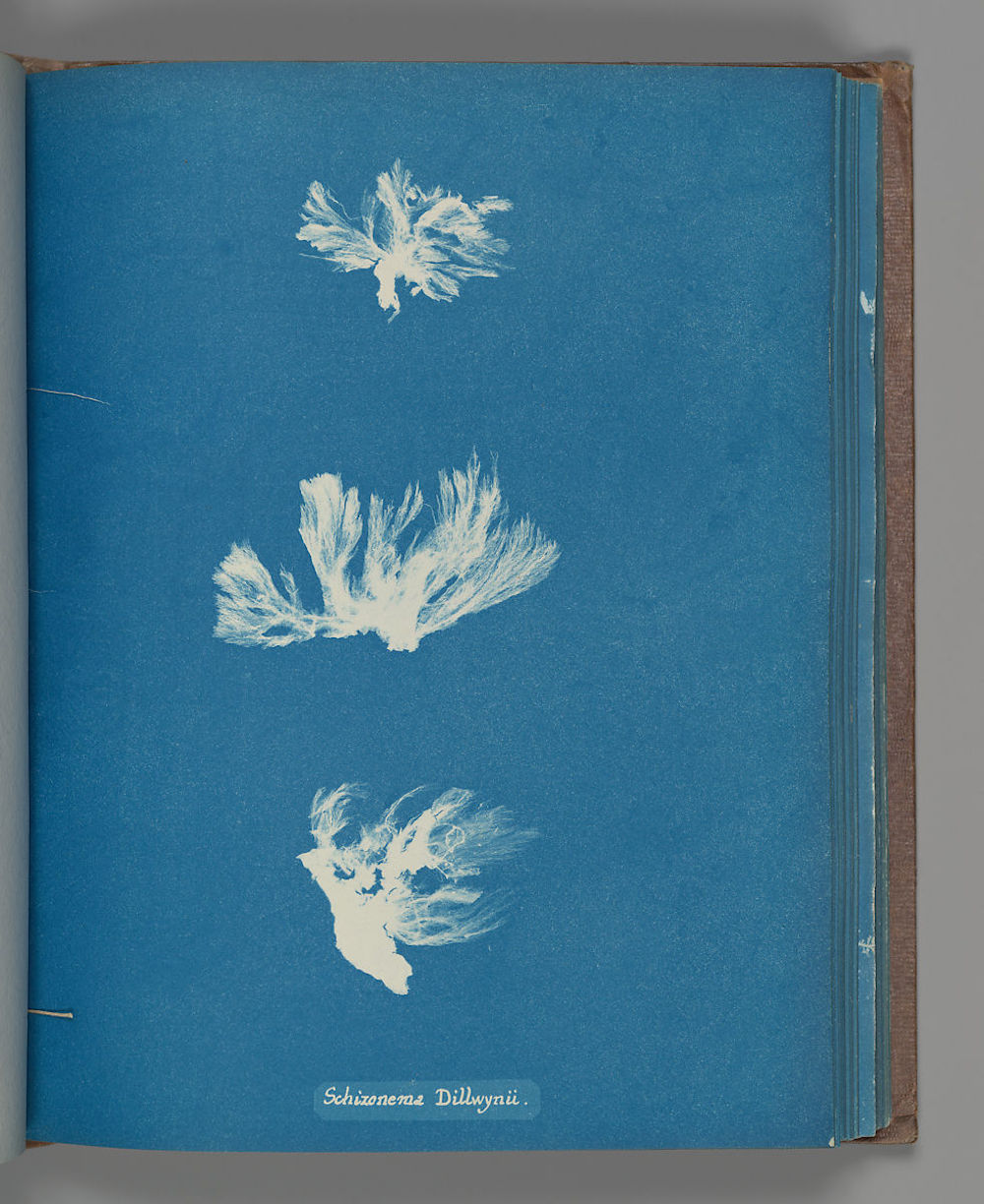
Schizonema Dillwynii by Anna Atkins, Gilman Collection, Purchase, The Horace W. Goldsmith Foundation Gift, through Joyce and Robert Menschel, 2005
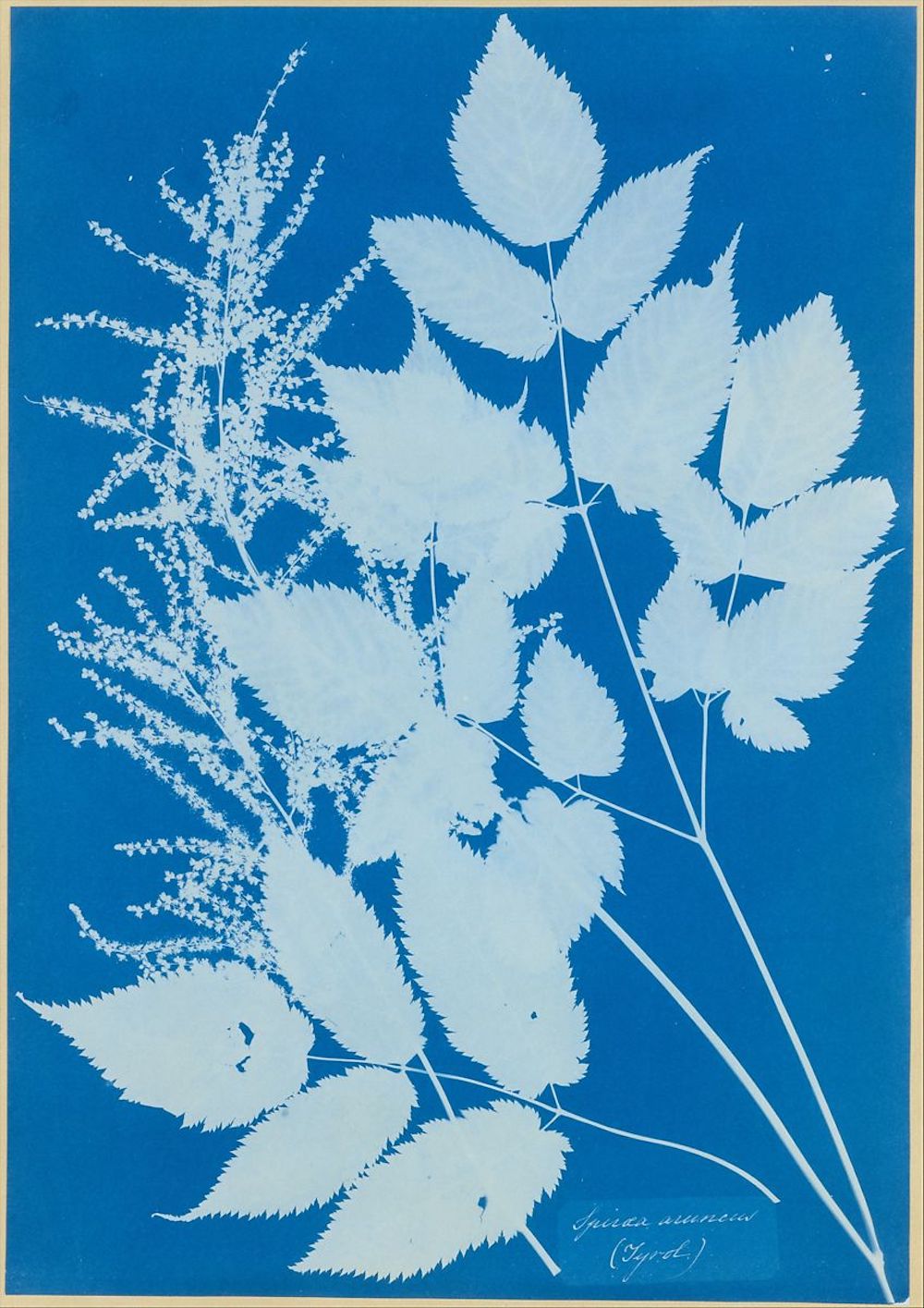
Spiraea aruncus (Tyrol) by Anna Atkins, Purchase, Alfred Stieglitz Society Gifts, 2004
Questions to Ask Children
What do you like about these images? How are they different from photographs you see today?
Can you think of a plant/flower that would create an interesting cyanotype?
Can you draw the outline of an Oak leaf? What about a Holly leaf?
This Talking Points Is Used In…
Pathway: using natural materials to make images
This is featured in the ‘Using Natural Materials to Make Images’ pathway
using sketchbooks to make visual notes
Show me what you see
Talking Points: Frances Hatch
A collection of imagery and sources designed to stimulate conversation around the work of Frances Hatch.
Please note that this page contains links to external websites and has videos from external websites embedded. At the time of creating, AccessArt checked all links to ensure content is appropriate for teachers to access. However external websites and videos are updated and that is beyond our control.
Please let us know if you find a 404 link, or if you feel content is no longer appropriate.
We strongly recommend as part of good teaching practice that teachers watch all videos and visit all websites before sharing with a class. On occasion there may be elements of a video you would prefer not to show to your class and it is the teacher’s responsibility to ensure content is appropriate. Many thanks.
*If you are having issues viewing videos it may be due to your schools firewall or your cookie selection. Please check with your IT department.*
This resource is free to access and is not a part of AccessArt membership.





Frances Hatch
Frances is a plein-air artist who responds creatively to the landscape around her. Frances uses the natural materials available to her in the environment that she is painting in, for example soil and grass or rock pigment.
“I am a participant in a conversation with the land. I respond rather than impose – working with what is given.”
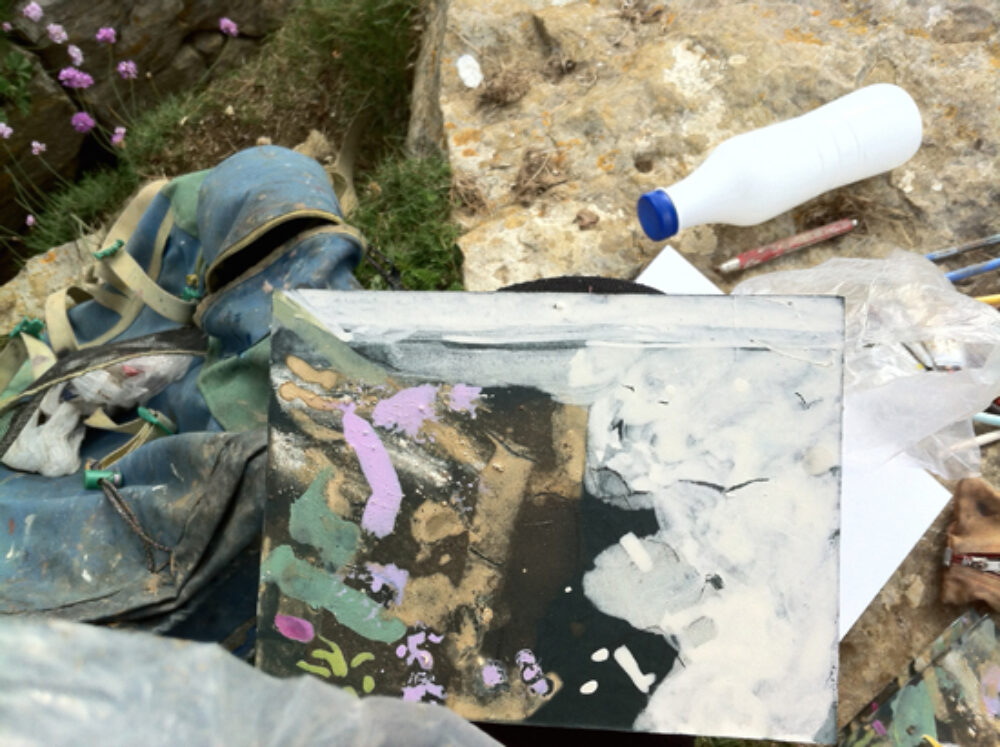
Questions to Ask Children
How do you think that dipping paper in water changes the quality of the pencil?
Is there a space in your local area where you would like to sit and draw?
Watch this video without volume on. Then play it with the volume on but ask the children to close their eyes and just listen. Finally watch the video again with eyes open and volume on.
Questions To Ask Children
Does the painting feel different when you tune into the sounds of the city? How so?
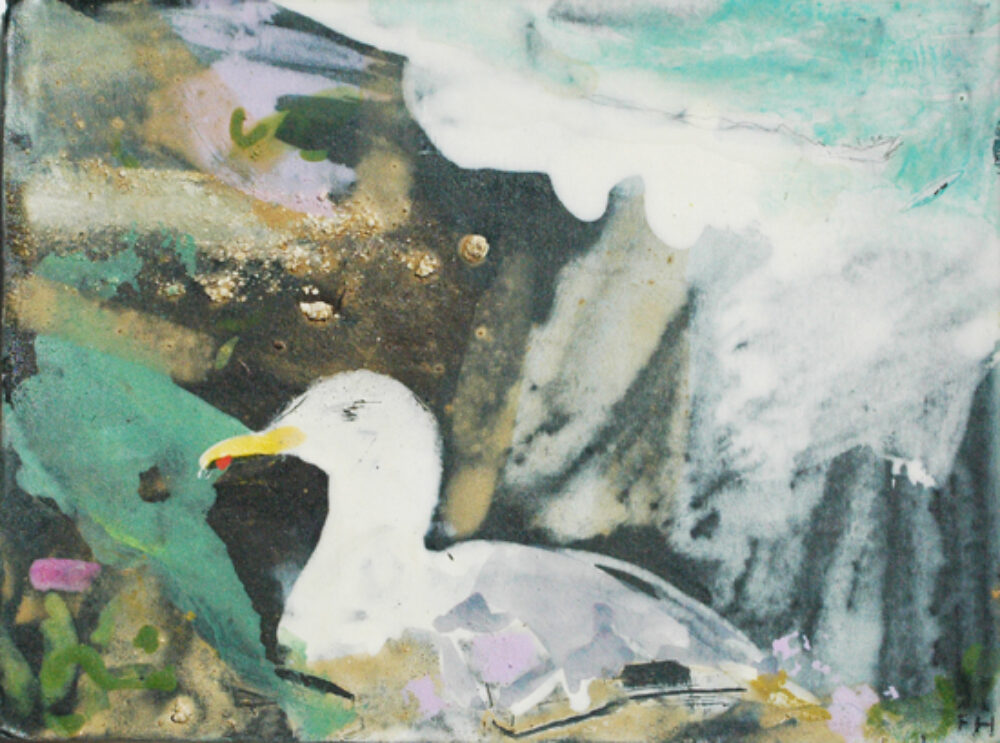
Questions to Ask Children
How would you describe Frances’s work?
How does it make you feel?
How would you describe the colours that she uses?
Can you name some natural materials that could be used for drawing and painting from around your local area?
Resource on AccessArt: Working WITH and IN the Landscape
Explore the resource “Working With and IN the landscape by Frances Hatch“.
This Talking Points Is Used In…
Pathway: using natural materials to make images
This is featured in the ‘Using Natural Materials to Make Images’ pathway
using sketchbooks to make visual notes
Show me what you see
Talking Points: Lotte Reiniger
This collection of videos and sources will help you explore the work of Lotte Reiniger.
Please note that this page contains links to external websites and has videos from external websites embedded. At the time of creating, AccessArt checked all links to ensure content is appropriate for teachers to access. However external websites and videos are updated and that is beyond our control.
Please let us know if you find a 404 link, or if you feel content is no longer appropriate.
We strongly recommend as part of good teaching practice that teachers watch all videos and visit all websites before sharing with a class. On occasion there may be elements of a video you would prefer not to show to your class and it is the teacher’s responsibility to ensure content is appropriate. Many thanks.
*If you are having issues viewing videos it may be due to your schools firewall or your cookie selection. Please check with your IT department.*
This resource is free to access and is not a part of AccessArt membership.




Lotte Reiniger was a German animation pioneer in the early 20th Century. Reiniger’s work focused on silhouette animation, she made over 40 films throughout her lifetime.
Reiniger invented the first multi-plane camera, an invention which Walt Disney would later go on to adapt and patent for himself.
Reiniger enjoyed retelling fairytales though silhouette animation and went on to create animations for Cinderella, Thumbelina and also spent 3 years making the first feature film The Adventures of Prince Achmed.
You might recognise her influence in more recent films, such as in the credits of the 2004 film ‘A Series of Unfortunate events’ or in the ‘Tale of three Brothers’ in Harry Potter and The Deathly Hallows pt 1.
Watch the videos below to find out more about the work and life of Lotte Reiniger.
Watch this video to find out more about her process.
Questions to Ask Children
Do you like Lotte Reiniger animations?
How do her animations compare with modern day Disney and Pixar animation?
Can you imagine why they were so ground breaking at the time?
Is there a story that you would like to see animated in this way?
How might you make a character seem excited through body movements alone? What about sad?
Thumbelina by Lotte Reiniger
Show this short clip to your class.
Questions to Ask Children
How would you describe the movements of the puppet?
Take a guess at how many different pieces had to be cut out for the puppet to dance?
Where do you think joins had to be made for movements?
Watch the clip again and ask children to create blind and continuous line drawings (not looking at the page) in a sketchbook of the puppet dancing. Ask them to look at the arms and legs and just draw whatever movement grabs their attention as the clip plays.
Watch clips of the credits animation for the 2004 film ‘A Series of Unfortunate Events’ and inspire discussion using the questions below.
Questions to Ask Children
What similarities can you see between this animation and the work of Lotte Reiniger?
What differences can you see?
This Talking Points Is Used In…
Pathway: Shadow Puppets
This is featured in the ‘Shadow Puppets’ pathway
using sketchbooks to make visual notes
Show me what you see
Talking Points: Paper Cut Puppets
A collection of imagery and sources designed to explore paper cut puppets.
Please note that this page contains links to external websites and has videos from external websites embedded. At the time of creating, AccessArt checked all links to ensure content is appropriate for teachers to access. However external websites and videos are updated and that is beyond our control.
Please let us know if you find a 404 link, or if you feel content is no longer appropriate.
We strongly recommend as part of good teaching practice that teachers watch all videos and visit all websites before sharing with a class. On occasion there may be elements of a video you would prefer not to show to your class and it is the teacher’s responsibility to ensure content is appropriate. Many thanks.
*If you are having issues viewing videos it may be due to your schools firewall or your cookie selection. Please check with your IT department.*
This resource is free to access and is not a part of AccessArt membership.



Holly Summerson
Holly is an animator, illustrator and community artist specialising in 2D, hand-made and mixed-media techniques.
This showreel was made from selected paper-cut animations from a recent project for Coppice Theatre.
Jamie Caliri
Jamie Caliri is a filmmaker and cinematographer in live action and animation. Watch some of the videos below to see how he directs paper cut and 3D animations.
Questions to Ask Children
How would you describe the movements that the puppets make?
Thinking about facial expressions and eye movements, how would you make a paper puppet seem happy? Sad? Excited? Mysterious? Up to no good?
This Talking Points Is Used In…
Pathway: Making Animated Drawings
This is featured in the ‘Making Animated Drawings’ pathway
using sketchbooks to make visual notes
Find out how pupils can respond to artists work in sketchbooks
Show me what you see
Enable close looking and drawing with this exercise
Talking Points: Making Drawings Move
A collection of imagery and sources designed to explore the different ways in which drawings can move.
Please note that this page contains links to external websites and has videos from external websites embedded. At the time of creating, AccessArt checked all links to ensure content is appropriate for teachers to access. However external websites and videos are updated and that is beyond our control.
Please let us know if you find a 404 link, or if you feel content is no longer appropriate.
We strongly recommend as part of good teaching practice that teachers watch all videos and visit all websites before sharing with a class. On occasion there may be elements of a video you would prefer not to show to your class and it is the teacher’s responsibility to ensure content is appropriate. Many thanks.
*If you are having issues viewing videos it may be due to your schools firewall or your cookie selection. Please check with your IT department.*
This resource is free to access and is not a part of AccessArt membership.





Steve Kirby and Andrew Fox
Calligraphy Animals Animated is a collaboration between calligrapher Andrew Fox and director and animator Steve Kirby.
Questions to Ask Children
What shapes can you see?
Which animal in this animation is your favourite? Why?
If you could make a calligraphy animal that would appear in this animation what would it be? How would it move?
Why is collaboration important?
Lucinda Schreiber
Lucinda is an Australian director, animator and illustrator. Find more of Lucinda’s work here.
Questions to Ask Children
How does this animation make you feel?
What is a ‘transition?’ How many did you spot in this animation?
What is your favourite part of the animation?
Animated Afganistan Children’s Drawings
Questions to Ask Children
How do you feel when you watch this animation?
Which are your favourite parts?
Workshop with Tracy Miller-Robbins
This animation is a result of a “Animated Drawings” workshop at MODE 2017: Motion Design Education Summit, Ohio State University.
Questions to Ask Children
This animation was made as a result of a workshop. Which parts inspire you?
Two Animation Winners…
The following animations won a competition to encourage children and teenagers to make time to be creative…
Questions to Ask Children
What do you think about the way the children choose to communicate their message?
This Talking Points Is Used In…
Pathway: Making Animated Drawings
This is featured in the ‘Making Animated Drawings’ pathway
using sketchbooks to make visual notes
Find out how pupils can respond to artists work in sketchbooks
Show me what you see
Enable close looking and drawing with this exercise
Talking Points: What is Installation Art
A collection of imagery and sources designed to introduce children to Installation Art.
Please note that this page contains links to external websites and has videos from external websites embedded. At the time of creating, AccessArt checked all links to ensure content is appropriate for teachers to access. However external websites and videos are updated and that is beyond our control.
Please let us know if you find a 404 link, or if you feel content is no longer appropriate.
We strongly recommend as part of good teaching practice that teachers watch all videos and visit all websites before sharing with a class. On occasion there may be elements of a video you would prefer not to show to your class and it is the teacher’s responsibility to ensure content is appropriate. Many thanks.
This resource is free to access and is not a part of AccessArt membership.




What is Installation Art?
Installation Art often occupies large rooms or spaces. It is usually designed for a specific environment for a temporary period of time. Installation art can often be engaged with and is meant to create a unified experience for the viewer.
Inflatable Installations
Tentacles in Philadelphia, USA – Filthy Luker and GroupX
Filthy Luker creates inflatable installations designed to make our environments more fun and surreal.
Questions to Ask Children
How does this installation make you feel?
What kind of creature is hidden inside the building? How many eyes does it have?
How many shoes would this creature need?
Is there a building in your local area that you would like to see an inflatable creature in?
Light Installations
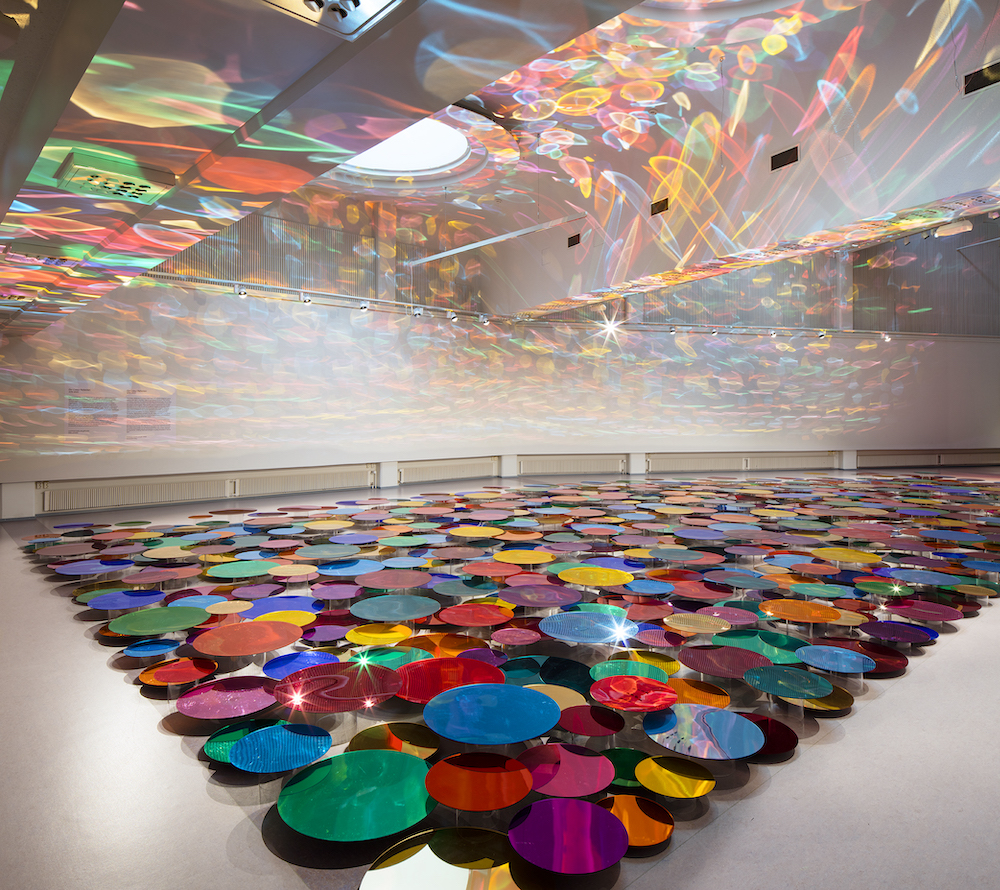
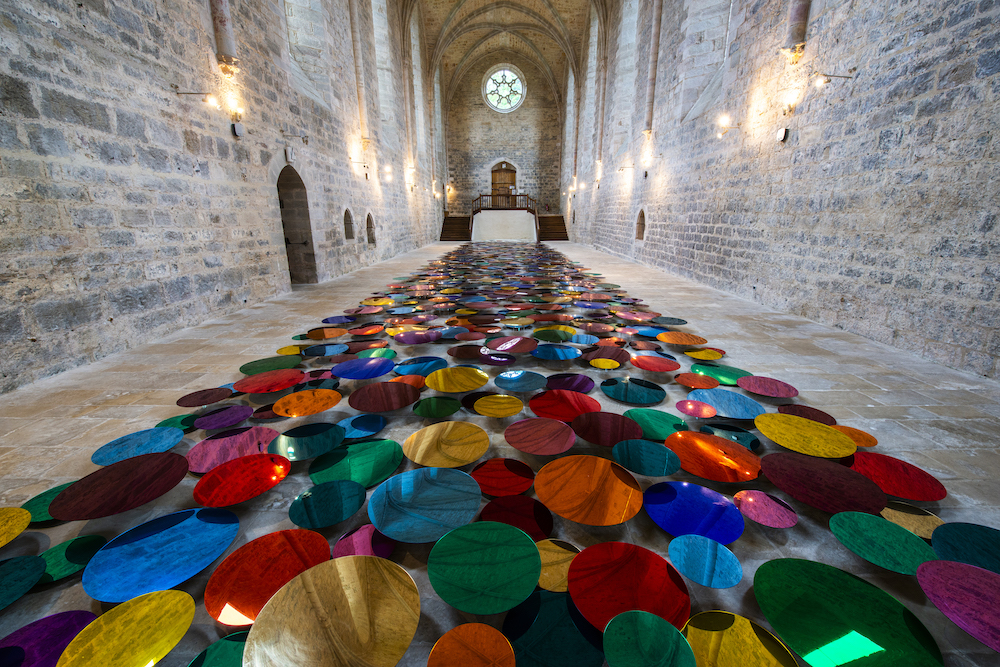
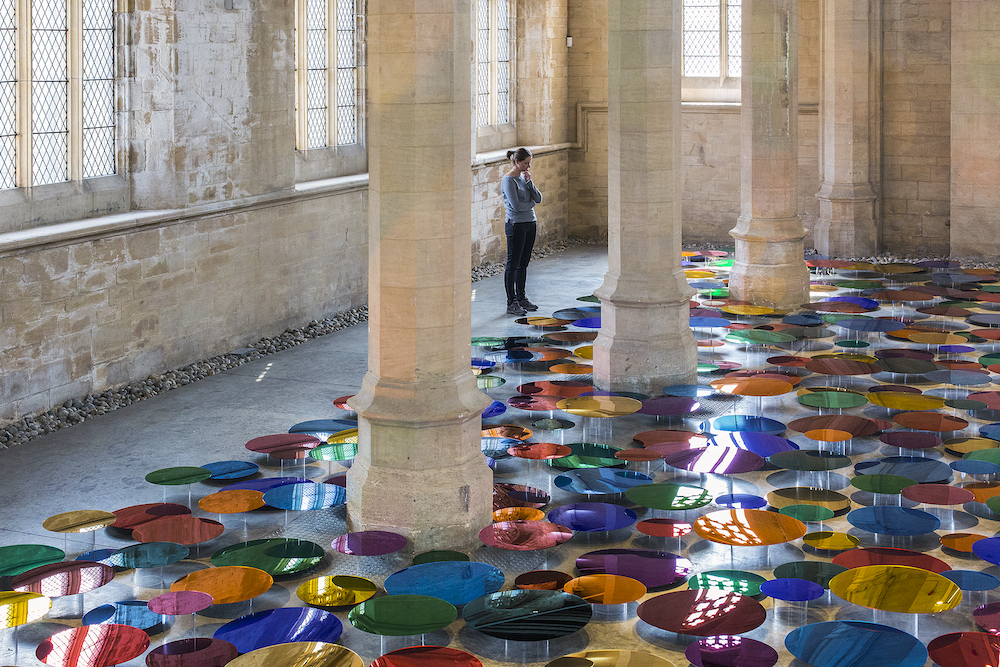
Liz West is an Internationally Acclaimed Visual Artist who uses light as a tool, controlling the amount, shape, form, size, colour, strength and quality to fill architectural or fabricated structures. Liz’s installations immerse the viewer in saturated environments and are known to stir up emotional responses in those who see it. Find out more about Liz West in her “Which Artists?” post.
Questions to Ask Children
How does this installation make you feel?
How does the environment that the installation is in, change the way you experience it?
How do you think it would feel to interact with this installation?
How has the installation transformed the environment?
This Talking Points Is Used In…
Pathway: Brave Colour
This is featured in the ‘Brave colour’ pathway
using sketchbooks to make visual notes
Find out how pupils can respond to artists work in sketchbooks
Show me what you see
Enable close looking and drawing with this exercise
Talking Points: What is Projection Mapping
A collection of imagery and sources designed to introduce children to Projection Mapping.
Please note that this page contains links to external websites and has videos from external websites embedded. At the time of creating, AccessArt checked all links to ensure content is appropriate for teachers to access. However external websites and videos are updated and that is beyond our control.
Please let us know if you find a 404 link, or if you feel content is no longer appropriate.
We strongly recommend as part of good teaching practice that teachers watch all videos and visit all websites before sharing with a class. On occasion there may be elements of a video you would prefer not to show to your class and it is the teacher’s responsibility to ensure content is appropriate. Many thanks.
*If you are having issues viewing videos it may be due to your schools firewall or your cookie selection. Please check with your IT department.*
This resource is free to access and is not a part of AccessArt membership.




